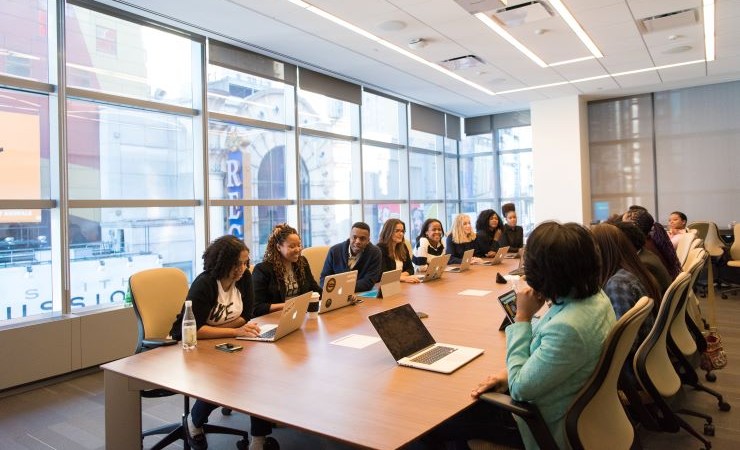Community Advisory Boards: Enhancing Cultural Competency and Efficacy
Dana S. Kaminstein and Kimberly M. Brown reflect on their article, “Conceptualizing the Carrying Function of Community Advisory Boards,” published in The Journal of Applied Behavioral Science.
Many of us have been in that challenging community board meeting: members argue with each other about aspirations, emotional undercurrents are strong, some members are attentive while other participants sit in stony silence or check their phones, and presenters who represent an institution drone on oblivious to the dynamics of the meeting. Or worse, a black sheep who can be blamed for lack of board progress becomes a stand-in replacing discussion of the real problems. What is happening here? The answer according to our research reveals that these groups are expressing verbal and nonverbal messages on behalf of the institution they are collaborating with. They are “carrying” important ideas and concepts for the larger organization of which they are a part. Some of these messages are helpful and some less so.

Our society is moving towards including communities in big decisions. Though teams and organizations may be deeply committed to involving communities, they lack clarity around how to go about it. Institutions and their teams of advocates and researchers require encouragement to be open to the psychology of systems and groups. These teams need tools and skills to understand how to bring to light hidden agendas, how best to engage and empower others, and how to differentiate conflict from hostility. In addition, teams require the means to welcome what may be diverse, even difficult, ideals based in a community’s norms and behaviors. Consequently, with our work, we hope to instill cultural competence and safety when institutions establish Community Advisory Boards (CABs).
CABs have to process verbal and nonverbal messages about their institutions. Sometimes these messages are positive and hopeful; other times, they are poisonous. An advisory board navigates or “carries” these messages which are sometimes about issues that the institution cannot bear to feel or talk about. We work at Veterans Affairs (VA), where effective engagement of Veterans in medical research demands investigators deepen their grasp of Veteran culture. Like other social groups, Veterans have their own language, their own histories, their own mannerisms and gestures that are unique. Furthermore, Veterans have typically faced very difficult experiences as a group, making them susceptible to greater trouble with their health and wellness. Veterans often raise issues and questions that VA finds difficult to deal with. Therefore, we argue that institutions and their representatives must take into account deep-rooted and relentless facets of group life in order to honor the importance of including diverse communities like Veterans in their efforts.

Inevitably, this brings up the question of advisory board members feeling heard. Moreover, the issue of tokenism was and is before us in a variety of contexts. Through our work, we documented situations where a Veteran patient on an advisory panel might be asked to give their views while being surrounded by others with superior institutional status and power. Almost as if they were under assault. To us, this placed that patient at a serious disadvantage: few patients are able to withstand the pressure of other group members who are more educated, better paid, and more knowledgeable without feeling unheard and tokenized. We should not be surprised that, in this setting, patients either appear shy and withhold their true opinions, or become aggressive when expressing them. In this way, researchers and institutions are setting up patients to fail.
Pulling together psychological literatures in new and unique ways is what makes our work innovative. We could not identify a single evidence base that explained everything we saw in our advisory board meetings, all the behaviors, conscious and unconscious attitudes and emotional expressions that we were witnessing. We had to look at a lot of published research to help us label what we were confronting: the miscues, distrust, and arguments over board direction. Subsequently, we shifted our application of the ‘identified patient’ literature to the group level. Similarly, Wilfred Bion’s ‘container and contained’ we examined in terms of groups embedded in the institution, rather than intra-group processes. This will impact the field by providing new adjectives to describe what is happening in their advisory panels, while also furnishing tools to course correct when things have gone awry.
As researchers, we often talk about realigning and “unpacking” complex concepts when discussing our innovation with colleagues, as if we are dealing with luggage. Accordingly, groups “carry” expectations, values, risks, and aspirations that, when recognized, will enhance CABs participation and efficacy in research design.



























































































